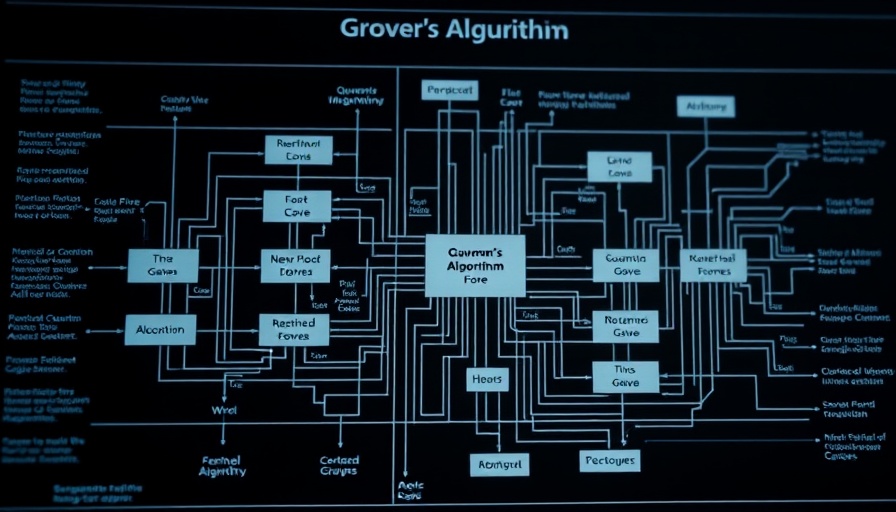
Breaking Ground in Quantum Computing
In a significant achievement, Silicon Quantum Computing (SQC) recently executed Grover’s algorithm on a four-qubit silicon processor with an impressive 93.46% accuracy. This represents 98.87% of the ideal theoretical probability, showcasing that SQC’s hardware can deliver high-fidelity results without the need for error correction—a major milestone in quantum technology.
During the experiment, SQC's silicon qubits demonstrated exceptional individual performance levels, achieving single-qubit fidelities exceeding 99.9% and two-qubit fidelities over 99%. Such high fidelity is crucial as it surpasses the fault-tolerance threshold necessary for practical quantum operations. This advance emphasizes the potential of high-quality qubits made from phosphorus atoms positioned within isotopically purified silicon, revealing a pathway towards scalable quantum solutions.
The Promise and Challenge of Grover's Algorithm
Grover’s algorithm is pivotal in quantum computing due to its capability to search through vast databases quadratically faster than classical methods. However, despite this accomplishment, implementing it with just four qubits remains a proof of concept, far from the significant scale required to unlock true quantum advantages over classical computing.
Michelle Simmons, CEO of SQC, articulated the core philosophy driving this advancement: “What ultimately matters is not how many qubits you have, but the quality of your qubits.” This statement resonates in the ongoing discourse within the quantum community, where the focus often shifts towards the number of qubits rather than their performance.
Looking Ahead: The Scalability Conundrum
Although the results demonstrate a favorable performance relative to theoretical benchmarks, scalability remains a pressing challenge for SQC. Maintaining high fidelity across more qubits is essential for achieving true quantum advantage and moving beyond mere theoretical demonstrations to practical applications.
The SQC team expresses cautious optimism about these challenges, understanding that while their current system shows the potential to reduce reliance on error correction, it must also scale effectively if it is going to compete with other quantum computing architectures in the future.
Concluding Thoughts
SQC's groundbreaking work on Grover’s algorithm without error correction represents a significant leap forward in the quantum computing landscape. As the technology evolves, the focus will need to be on maintaining high fidelity while exploring the scalability of qubit systems. As we move towards a new era of quantum computing, understanding these dynamics will be essential in determining the viability of commercial-scale quantum solutions.
 Add Row
Add Row  Add
Add 




 Add Row
Add Row  Add
Add 

Write A Comment